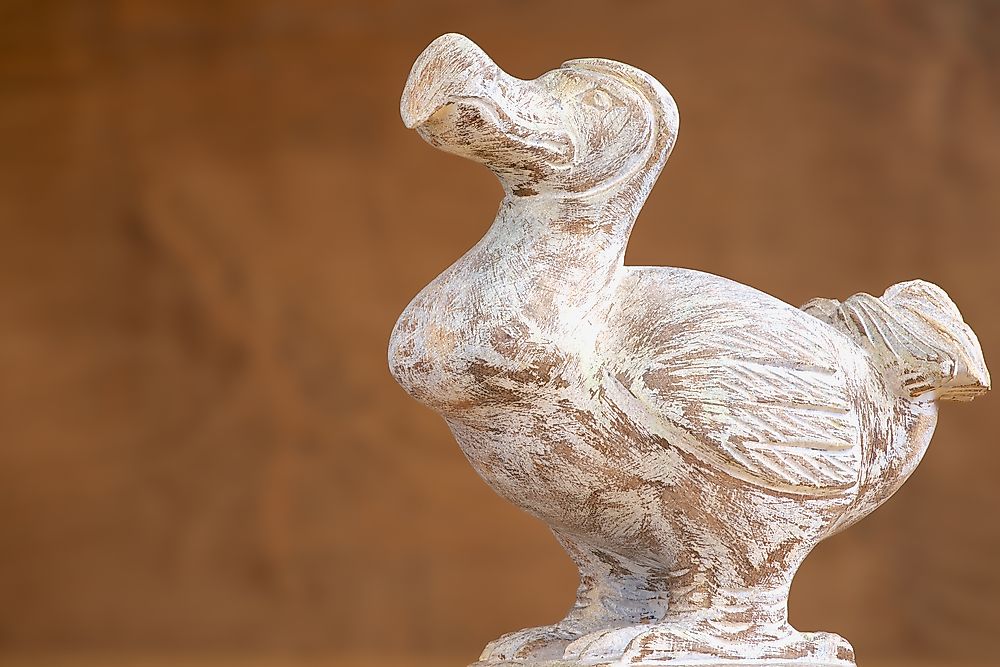Well Time to Flood the Earth Again
Timeline Of Mass Extinction Events On Earth

Of the many mysterious and unexplained events that accept happened on Earth over millions of years, mass extinctions are maybe the most perplexing. Mass extinctions involve the monumental loss of found and brute species over short time. These events get out Earth ripe for evolutionary changes as new species develop to have the places of those lost. Scientists take discovered at to the lowest degree five unlike mass extinctions, referred to equally the Big 5, over history when anywhere between fifty% and 75% of life were lost. Countless questions remain unanswered about how and why these moments came to laissez passer. Below is the information that experts have gathered and so far.
The Mass Extinction Periods
Ordovician–Silurian Extinction
Around 439 one thousand thousand years ago, 86% of life on Earth was wiped out. Scientists believe two major events resulted in this extinction: glaciation and falling body of water levels. Some theories propose that the World was covered in such a vast quantity of plants that they removed likewise much carbon dioxide from the air which drastically reduced the temperature. Falling sea levels were possibly a consequence of the Appalachian mountain range forming. The bulk of the fauna life lived in the ocean. Trilobites, brachiopods, and graptolites died off in large numbers but interestingly, this did not pb to whatsoever major species changes during the next era.
Belatedly Devonian Extinction
Estimates propose that effectually 75% of species were lost around 364 one thousand thousand years ago. Data is unclear as to whether the belatedly Devonian extinction was one single major event or spread over hundreds of thousands of years. Trilobites, which survived the Ordovician-Silurian extinction due to their difficult exoskeletons, were nearly exterminated during this extinction. Behemothic land plants are thought to be responsible as their deep roots released nutrients into the oceans. The nutrient rich waters resulted in mass amounts of algal blooms which depleted the seas of oxygen and therefore, animal life. Volcanic ash is thought to be responsible for cooling earth'due south temperatures which killed off the spiders and scorpion-type creatures that had made it on country by this time. A distant amphibian cousin, elpistostegalians, had besides ventured onto country simply became extinct. Vertebrae did not appear on land over again until ten million years afterward, the ichthyostegalians from which nosotros all evolved. If the belatedly Devonian extinction had not occurred, humans might not exist today.
Permian–Triassic extinction
This mass extinction, which occurred 251 million years ago, is considered the worst in all history considering around 96% of species were lost. Ancient coral species were completely lost. "The Great Dying" was caused by an enormous volcanic eruption that filled the air with carbon dioxide which fed different kinds of leaner that began emitting big amounts of marsh gas. The Earth warmed, and the oceans became acidic. Life today descended from the four% of surviving species. After this event, marine life developed a complexity not seen before and snails, urchins, and crabs emerged as new species.
Triassic–Jurassic extinction
The Triassic-Jurassic extinction happened between 199 one thousand thousand and 214 million years ago and as in other mass extinctions, it is believed in that location were several phases of species loss. The arraign has been placed on an asteroid affect, climate change, and inundation basalt eruptions. During the beginning of this era, mammals outnumbered dinosaurs. By the cease, dinosaurs' ancestors (archosaurs) reigned the world'due south surface. This extinction laid the path that allowed for the evolution of dinosaurs which afterwards existed for around 135 1000000 years.
Cretaceous–Paleogene extinction
Peradventure the most well-known of the Big 5, the end of the Cretaceous-Paleogene brought on the extinction of dinosaurs. A combination of volcanic activity, asteroid impact, and climate change effectively concluded 76% of life on world 65 million years ago. This extinction menstruation allowed for the evolution of mammals on country and sharks in the ocean.
Are We Adjacent?
A heated debate in the scientific community is whether or not globe is heading into another mass extinction. Currently, the world is in the Holocene era, plants and animals are dying off at abnormally fast rates and life as nosotros know information technology is in danger. This time, still, the cause is not volcanic action nor asteroid impacts. Human activeness is triggering a modify in global climate which has increased species extinction to betwixt x and 100 times faster than the norm. The evidence is pretty articulate, nosotros are headed toward the 6th mass extinction.
The Timeline Of The Mass Extinction Events On Earth
| Rank | Extinction Event | Gauge Fourth dimension Of Occurrence |
|---|---|---|
| 1 | Holocene extinction | Present |
| two | Cretaceous–Paleogene extinction event | 65 meg years ago |
| three | Triassic–Jurassic extinction event | 199 million to 214 million years agone |
| 4 | Permian–Triassic extinction effect | 251 million years agone |
| 5 | Late Devonian extinction | 364 million years ago |
| 6 | Ordovician–Silurian extinction events | 439 million years ago |
Source: https://www.worldatlas.com/articles/the-timeline-of-the-mass-extinction-events-on-earth.html
0 Response to "Well Time to Flood the Earth Again"
Post a Comment